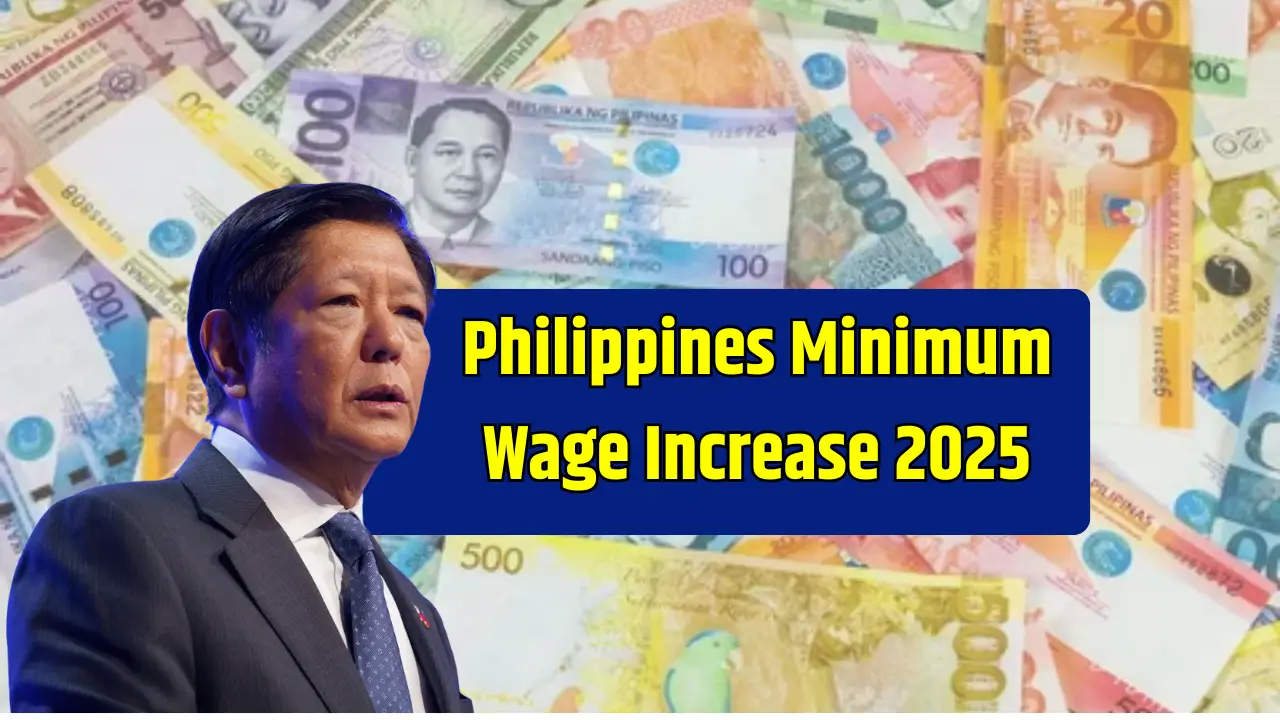The Philippines Minimum Wage Increase 2025 brings a new wage landscape, reflecting government efforts to address the ever-evolving cost of living and protect the welfare of millions of Filipino workers.
With the latest wage orders issued by the Regional Tripartite Wages and Productivity Boards (RTWPBs), minimum wage earners, both in urban and rural sectors, will experience significant changes in daily pay starting in 2025.
Rates remain highly regionalised, acknowledging varied economic conditions, living costs, and workforce demands from Metro Manila to Mindanao.
This article provides a detailed overview of the latest minimum wage rates per region, the rationale for differing rates, the process for wage setting, and how these changes will affect employers, workers, and the entire Philippine economy.
Understanding Minimum Wage Increases in the Philippines
Unlike many nations with a single national minimum wage, the Philippines adopts a region-specific structure.
The RTWPBs—made up of representatives from government, labour, and management—review local factors such as inflation, productivity, and cost of living before deciding wage rates for their respective regions.
Increases are intended to balance employee welfare and business sustainability, with annual reviews and adjustments common in regions facing rapid economic or price changes.
For 2025, minimum wages have been boosted by new wage orders in many regions, with commemorative legislation under discussion aiming for a nationwide hike.
NCR (Metro Manila): The Highest Minimum Wage
As of 17 July 2025, the National Capital Region (NCR) has the highest daily minimum wage rate in the country for non-agricultural workers at ₱695—an increase of ₱50 from the previous rate of ₱645. This change affects over 1.2 million wage earners, making the region’s economy especially competitive.
For agricultural workers and those in small-scale retail and manufacturing, the minimum is set at ₱608.
Comparative Table: 2025 Minimum Wage Rates by Region
| Region | Daily Minimum Wage – Non-Agriculture (₱) | Daily Minimum Wage – Agriculture (₱) | 2025 Increase and Effective Date |
| NCR (Metro Manila) | 695 | 608 | ₱50 hike – 17 July 2025 |
| Region III (Central Luzon) | 400 – 500 | 387 – 450 | Effective Q1 2025 |
| Region IV-A (CALABARZON) | 430 – 520 | 395 – 481 | Effective March 2025 |
| Region V (Bicol) | 435 | 410 | ₱40 hike – 5 April 2025 |
| Region VI (Western Visayas) | 480 – 513 | 470 – 500 | Effective Q2 2025 |
| Region VII (Central Visayas) | 500 – 540 | 485 – 520 | ₱39 hike – 4 October 2025 |
| Region VIII (Eastern Visayas) | 390 – 450 | 385 – 415 | Effective April 2025 |
| Region X (Northern Mindanao) | 434 – 461 | 404 – 435 | Effective January 2025 |
| Region XI (Davao) | 450 – 491 | 425 – 439 | Effective Q1 2025 |
| CARAGA (Region XIII) | 435 | 410 | Effective 2025 |
| ARMM (Bangsamoro) | 400 | 400 | Effective 2025 |
Note: Sub-regions and classes within some regions may have specific adjustments due to urban/rural dynamics.
Key Drivers and Process of Wage Setting
Wage increases in the Philippines are driven by:
- Rising costs of food, utilities, transport, and housing, especially in cities
- Regular review petitions by labour and civil society groups
- Pressures from inflation outpacing previous wage increments
- Government goals to ensure a basic standard of living for every worker
The process begins with reviews and consultations by RTWPBs, public hearings involving employers and employees, and the publication of new wage orders. The system is designed for flexibility—addressing unique regional concerns while adhering to national labour laws.
Recent Legislative Proposals: National Wage Increase
In June 2025, the House of Representatives approved a bill (House Bill 11376) proposing a ₱200 across-the-board daily increase for all private-sector minimum wage workers.
The Senate previously passed its own version for a ₱100 increase. With bicameral negotiations ongoing, a legislated national wage hike could soon supplement or supersede regional wage board hikes—though timing will depend on political consensus and the president’s final approval.
Regional Wage Disparities: Why Do They Exist?
Discrepancies in wage levels from Metro Manila to other provinces reflect differences in:
- Local cost of living
- Economic development and industry density
- Access to services and infrastructure
- Productivity levels
For instance, while the cost of living in NCR is among the highest, many expenses (fuel, utilities, commodities) nationwide are similar, widening the gap between workers’ take-home pay and their true cost-of-living needs, especially in rural areas.
Minimum Wage by Sector: Agriculture vs. Non-Agriculture
Minimum wages are further categorised by sector. Non-agricultural workers (manufacturing, services, business process outsourcing, etc.) generally receive higher daily rates than those in agriculture due to higher value-added and productivity.
For example, in Region VII’s Central Visayas, non-agricultural rates reach ₱540, while in CARAGA, agriculture sector minimum hovers around ₱410.
Impact of the 2025 Wage Increase
The 2025 wage hikes mean:
- Millions of workers gain higher daily rates, helping offset inflation’s impact
- Small enterprises may feel financial pressure to comply, potentially leading to gradual adjustments in hiring or operations
- Greater income can stimulate local consumption and economic growth in the regions
- Ongoing advocacy is needed to ensure that increases remain aligned with actual living wage benchmarks, as even the highest minimums often fall short of the recommended family living wage
Wage Adjustment and Compliance
Employers must ensure timely and full compliance with regional wage orders; penalties apply to violators. Both private and public organisations are obliged to update payroll and advise all affected workers.
RTWPBs monitor wage implementation, address complaints, and facilitate dispute resolution. Employees are encouraged to report non-compliance to their local Department of Labor and Employment (DOLE) offices.
Table: Sample 2025 Regional Minimum Wages (Non-Agriculture)
| Region | New Daily Wage (₱) | Previous Wage (₱) | Effective Date |
| Metro Manila (NCR) | 695 | 645 | 17 July 2025 |
| Central Visayas | 540 (Class A cities) | 501 | 4 October 2025 |
| Bicol | 435 | 395 | 5 April 2025 |
| Western Visayas | 513 | 480 | Q2 2025 |
Conclusion
The Philippines Minimum Wage Increase for 2025 strengthens protections for the country’s working class and provides a much-needed boost to incomes amid rising inflation and cost of living.
Although disparities by region and sector continue, the latest wage orders and pending national legislation are a step toward more equitable and decent wages for all Filipinos. Timely implementation, employer compliance, and ongoing monitoring will be critical to realising the intended benefits and setting the stage for future improvements.
FAQs: Philippines Minimum Wage Increase 2025
1. What is the new minimum wage in Metro Manila for 2025?
The daily minimum wage in Metro Manila (NCR) is ₱695 for non-agricultural workers as of 17 July 2025.
2. Why do minimum wages differ by region in the Philippines?
Regional wages reflect differences in living costs, productivity, and local economic conditions, set by RTWPBs.
3. Are there pending proposals for a nationwide minimum wage hike in 2025?
Yes, a ₱200 daily hike has been approved by the House, and a ₱100 proposal by the Senate; the final amount awaits bicameral approval.
4. When do new wage rates typically take effect after approval?
Wage orders usually take effect 15 days after publication and remain until the next wage review.
5. How are minimum wages enforced in the Philippines?
Regional wage boards and DOLE oversee enforcement; employers must comply, or face penalties for violations.














